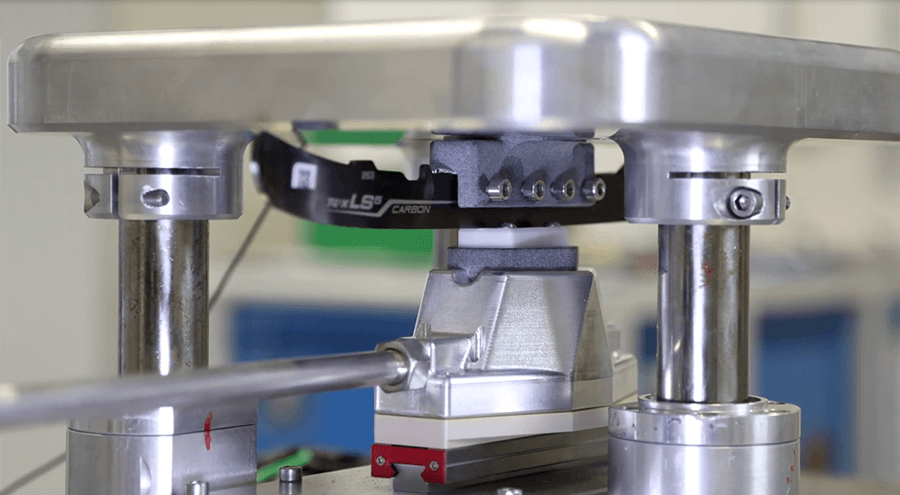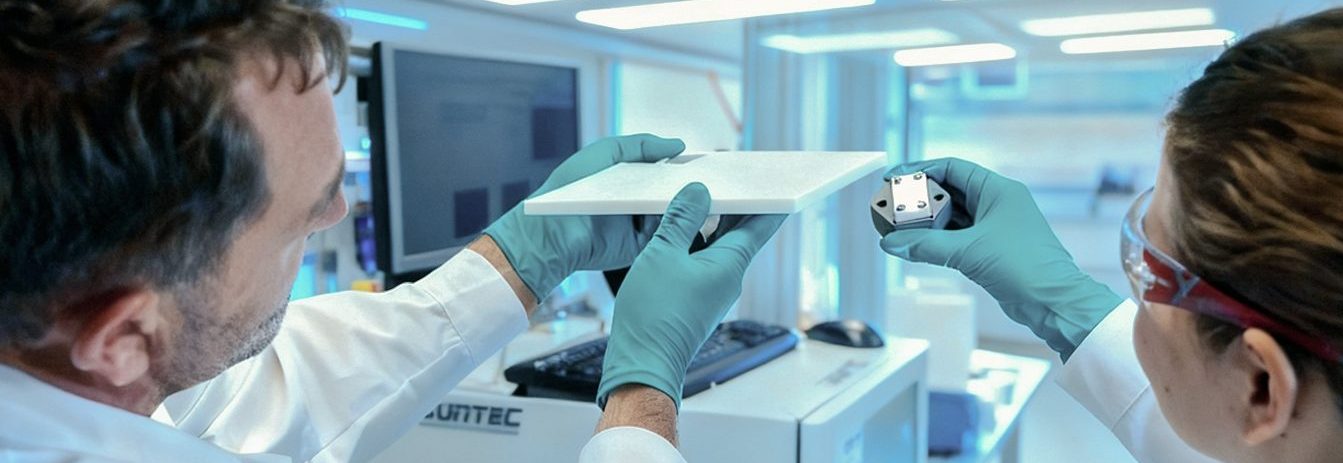Fraunhofer Institute proves what many thought to be impossible
Skating without compromise has long been our vision at Glice. Today, that vision is reality: Fraunhofer Institute, Europe’s leading applied research organization, has independently confirmed that our new synthetic ice surface delivers a glide on par with frozen water. After five years of extensive research Glice has cracked the “code of ice.” What was once thought impossible has now been confirmed by science.
The Science Behind the Breakthrough
Fraunhofer scientists took a deep dive into the mechanics of ice-like glide. Their research focused on the critical first moment of skating—the push-off—where friction on traditional synthetic surfaces made movement feel unnatural.
To test performance, researchers built a custom friction rig that simulated real skating conditions. They measured not only the friction forces but also the depth of blade penetration, both essential to achieving a natural skating feel. The outcome was clear: blade penetration was kept to a minimum and the production of plastic shavings was reduced enormously, eliminating two of the biggest drawbacks of earlier synthetic surfaces.

In addition to that, the gliding test results were groundbreaking: the new Glice surface demonstrated a friction coefficient of around 0.035 against a steel-blade. For context:
- At 1.0, skating is impossible.
- At 0.5, it feels like dragging blades through sand.
- Real glide begins below 0.1, and a truly joyful experience sets in at 0.05 and under.
Glice StellarGlide™—the name of this breakthrough surface—lands firmly in the “ice zone.” Read the official Fraunhofer press release here.
Material Innovation at the Core
The secret lies in a dual-layer material system:
- An ultra-stable polymer base provides structure and durability.
- A highly mobile polymer surface layer offers minimal resistance to skate blades.
To this, Glice adds nano compounds originally developed for space technology, silicons, and UV protectors—ensuring both performance and resilience under heavy use. Produced under high heat and pressure, the result is a dense, uniform surface ready for professional skating.
Testing with Professional Athletes
Lab numbers are convincing, but nothing beats real-world feedback. Professional hockey players and figure skaters who tested Glice confirmed what the data already suggested: the glide feels just like ice. Starts, turns, and stops happen naturally, and athletes reported that the surface finally delivered the authentic skating experience synthetic ice had always promised.

A Sustainable Future for Ice Sports
Beyond performance, the breakthrough carries enormous environmental significance. Unlike refrigerated rinks, the new Glice surface requires no water and no energy-intensive cooling systems. It opens the door to year-round skating in places where ice was previously impossible—without the environmental footprint.
As CEO Viktor Meier puts it:
“With this breakthrough, our vision becomes reality: sustainable skating that feels just like the real thing.”
Why This Matters
For decades, synthetic ice was an almost-but-not-quite solution. With the validation from Fraunhofer Institute, Glice marks the first time science has proven that synthetic ice can rival frozen water. It’s more than a product upgrade—it’s a turning point for ice sports worldwide.
Discover how Glice rinks can transform your venue.

